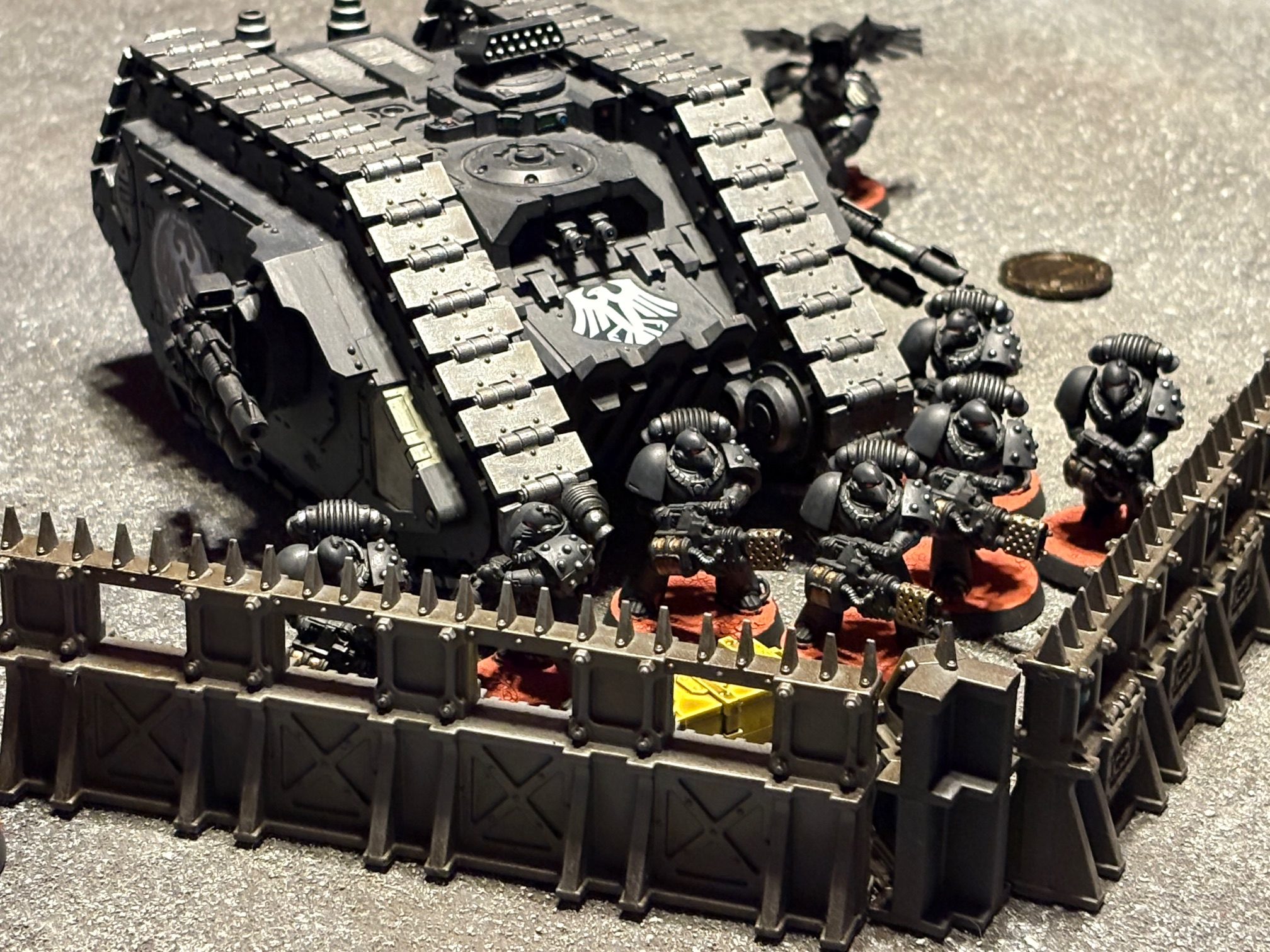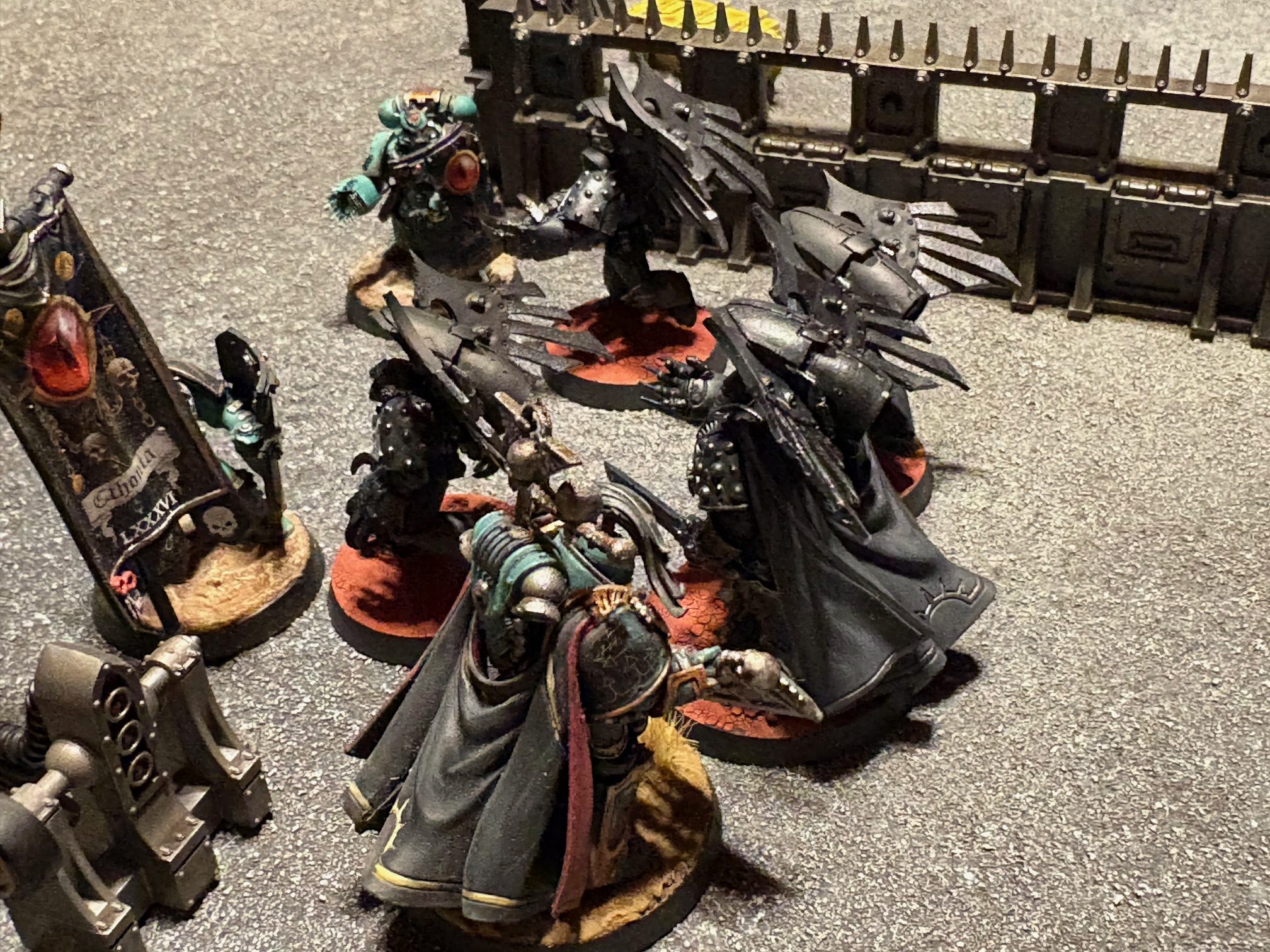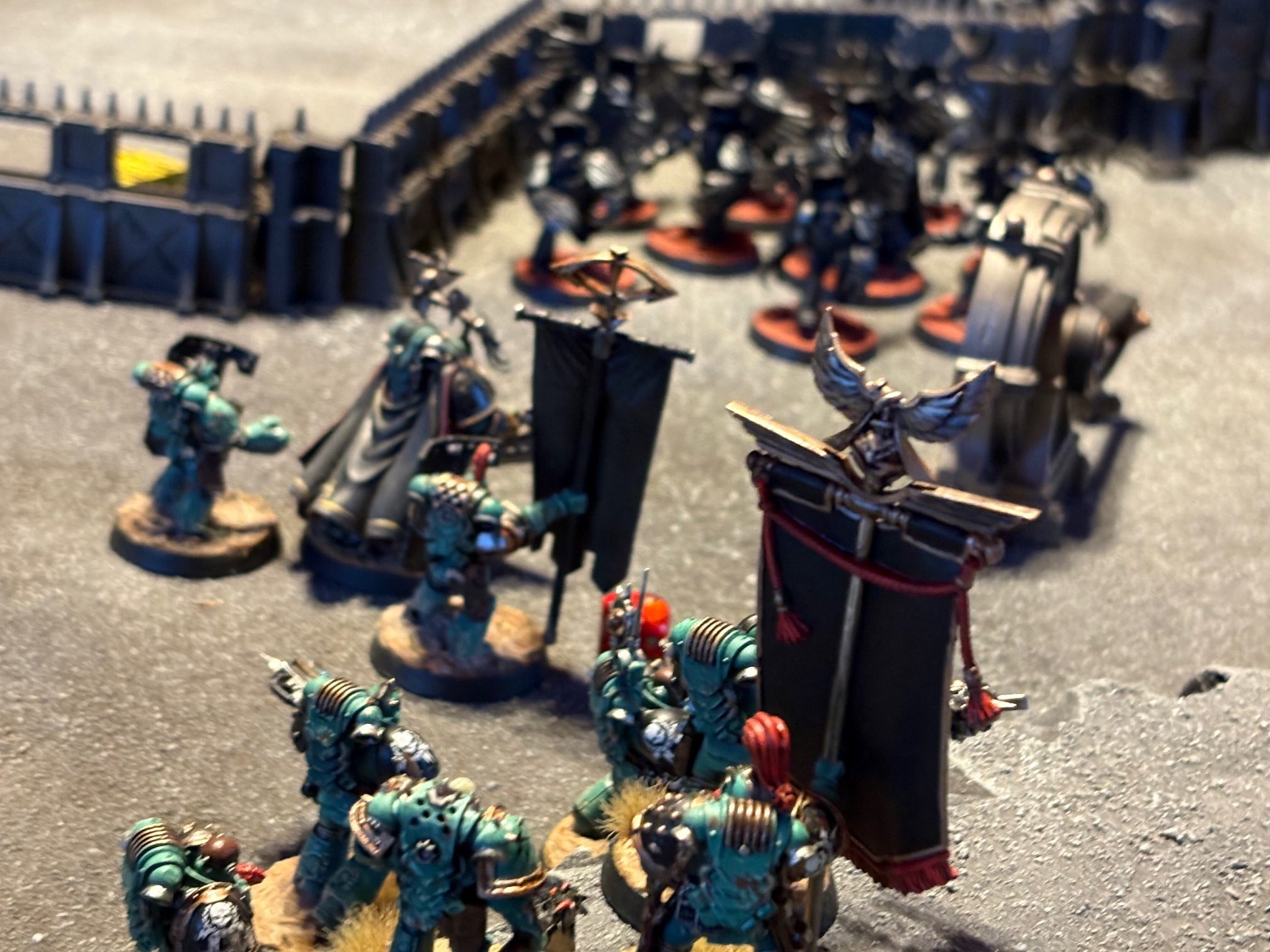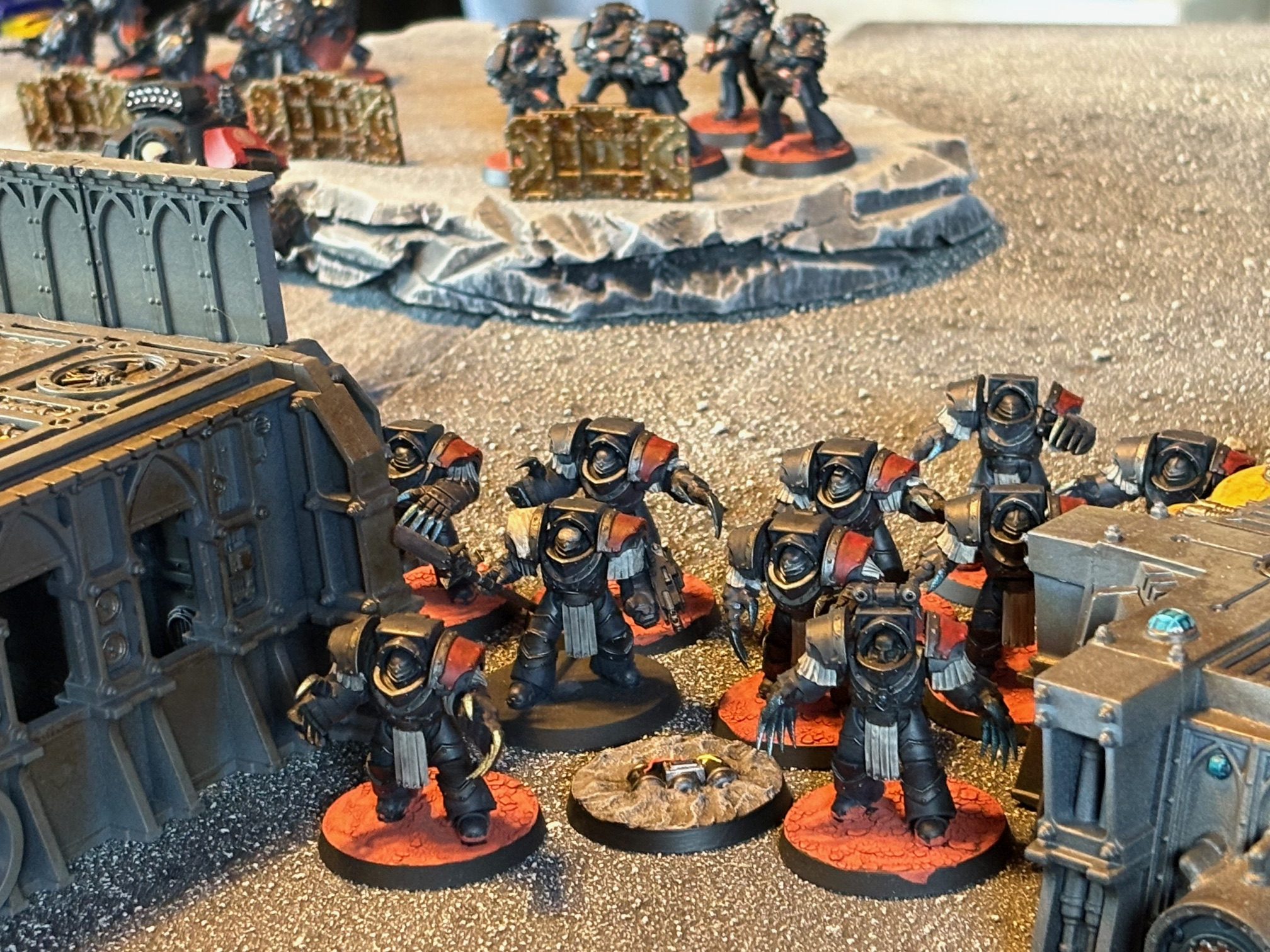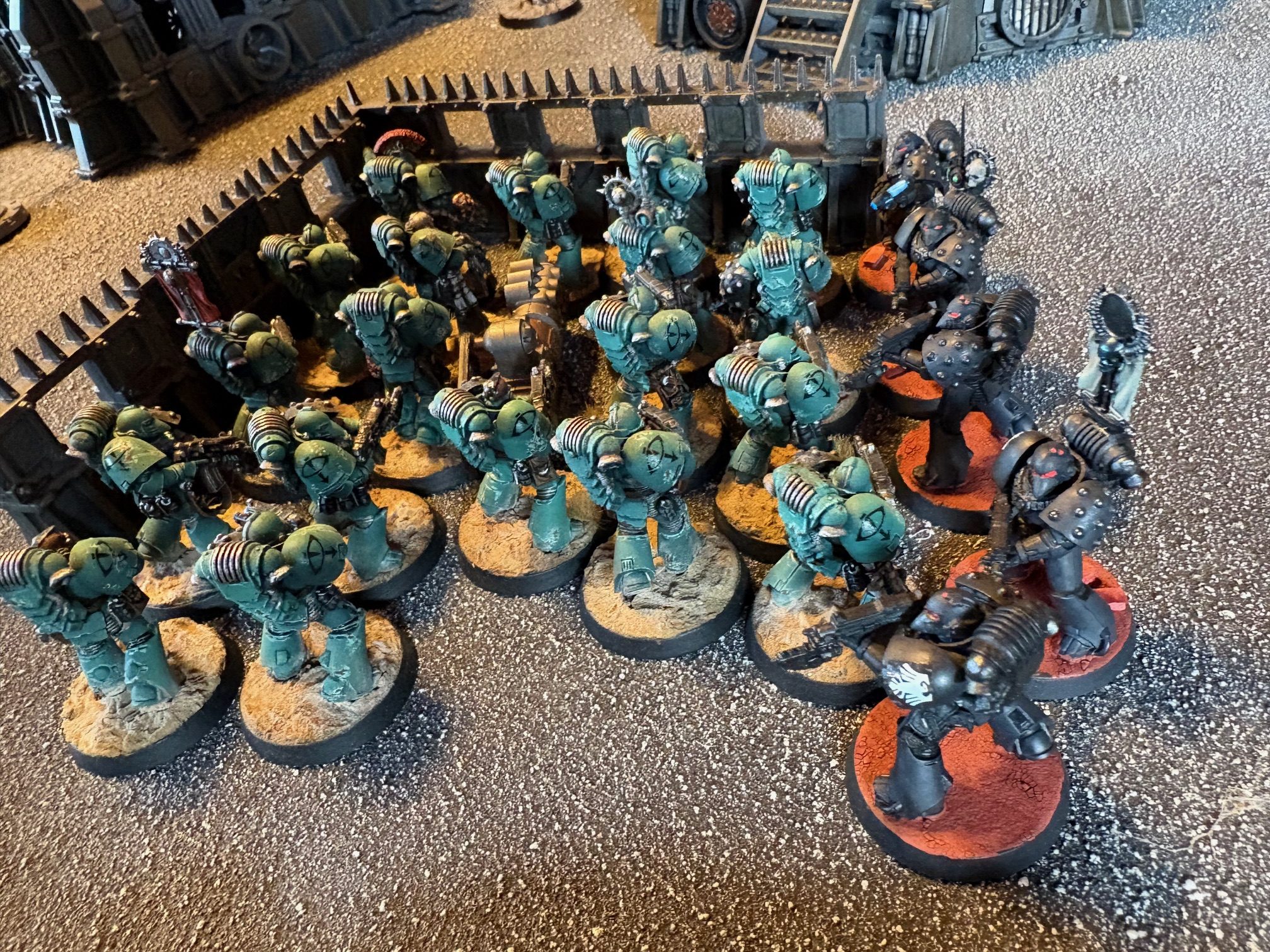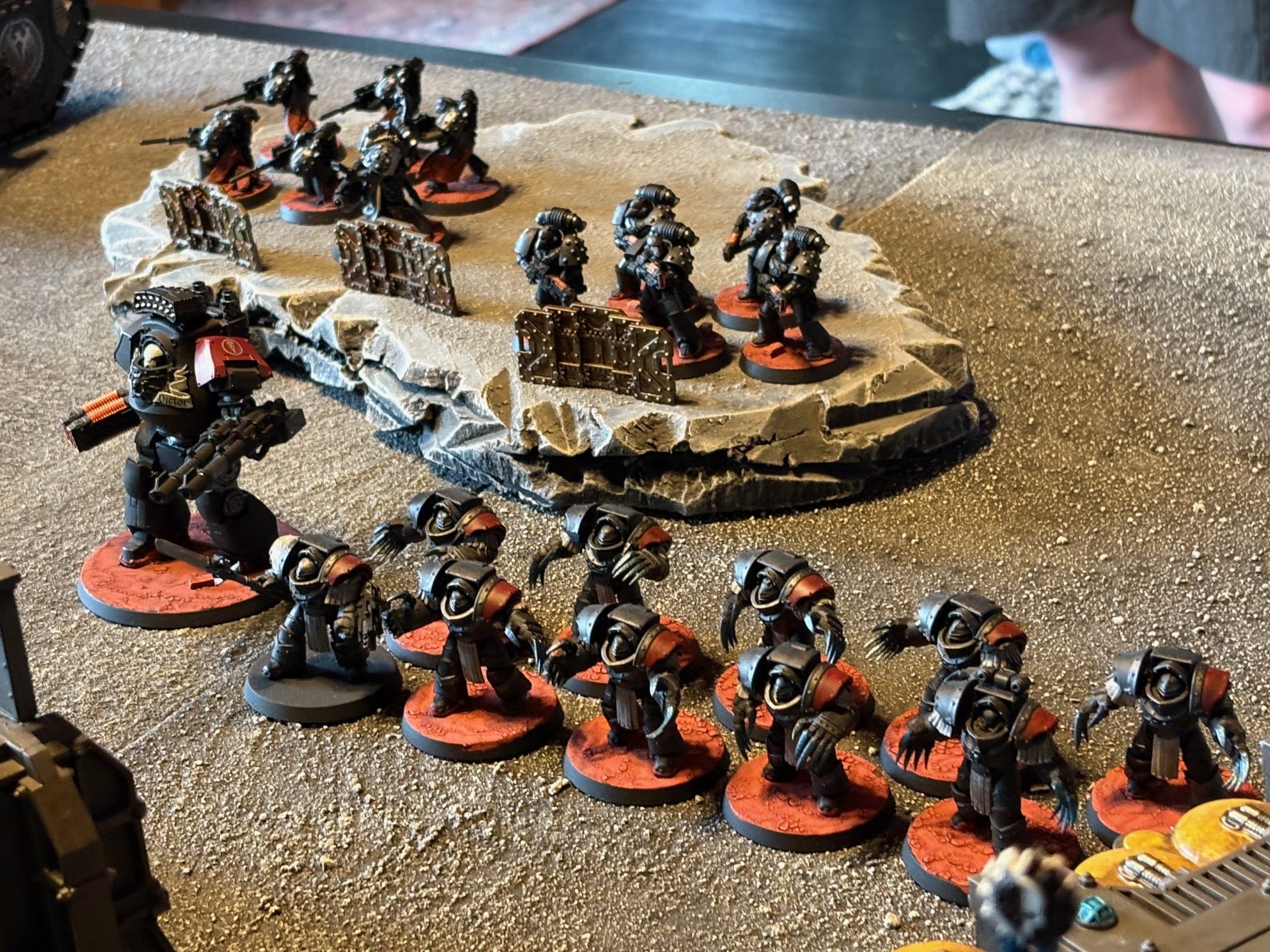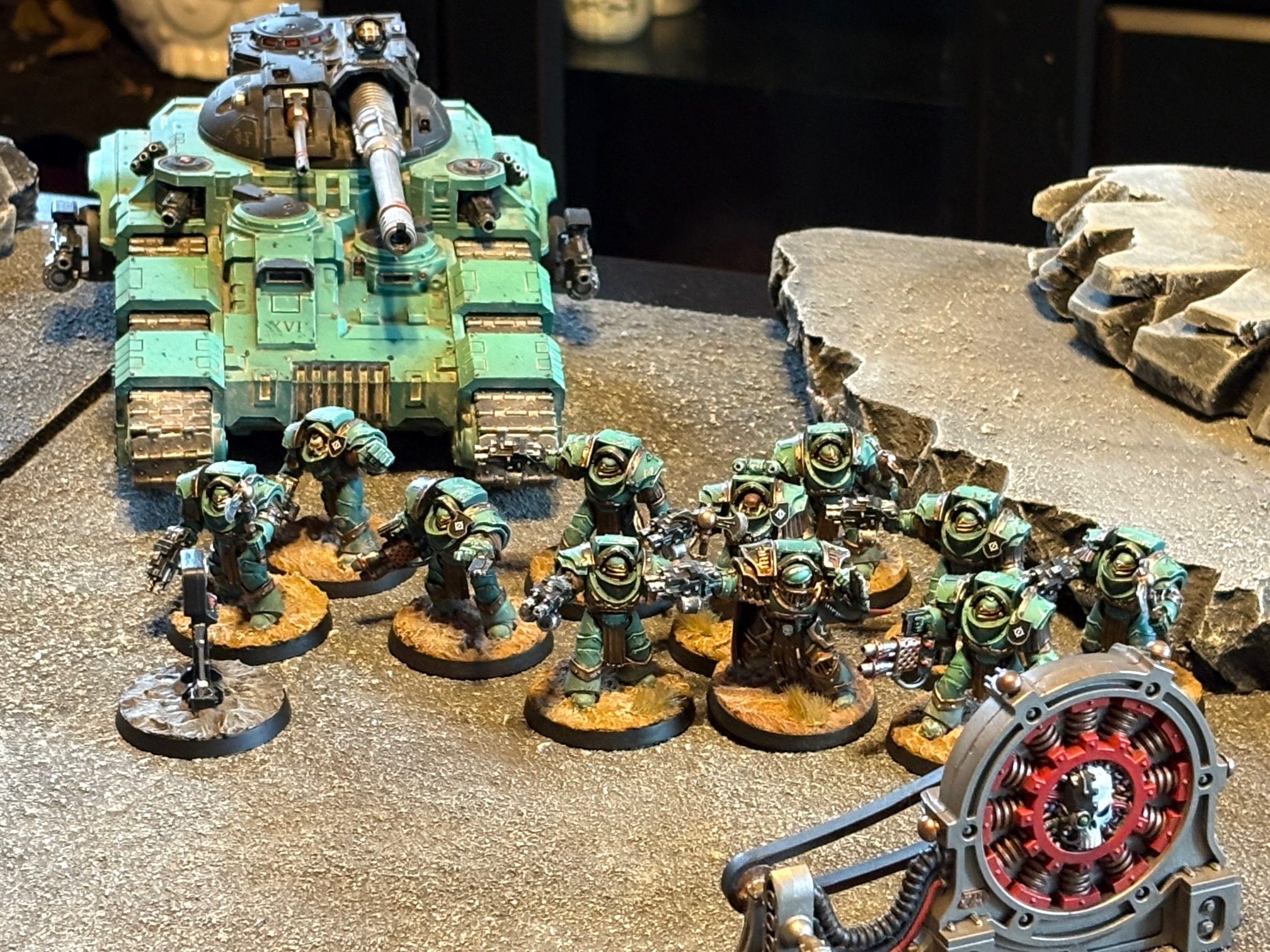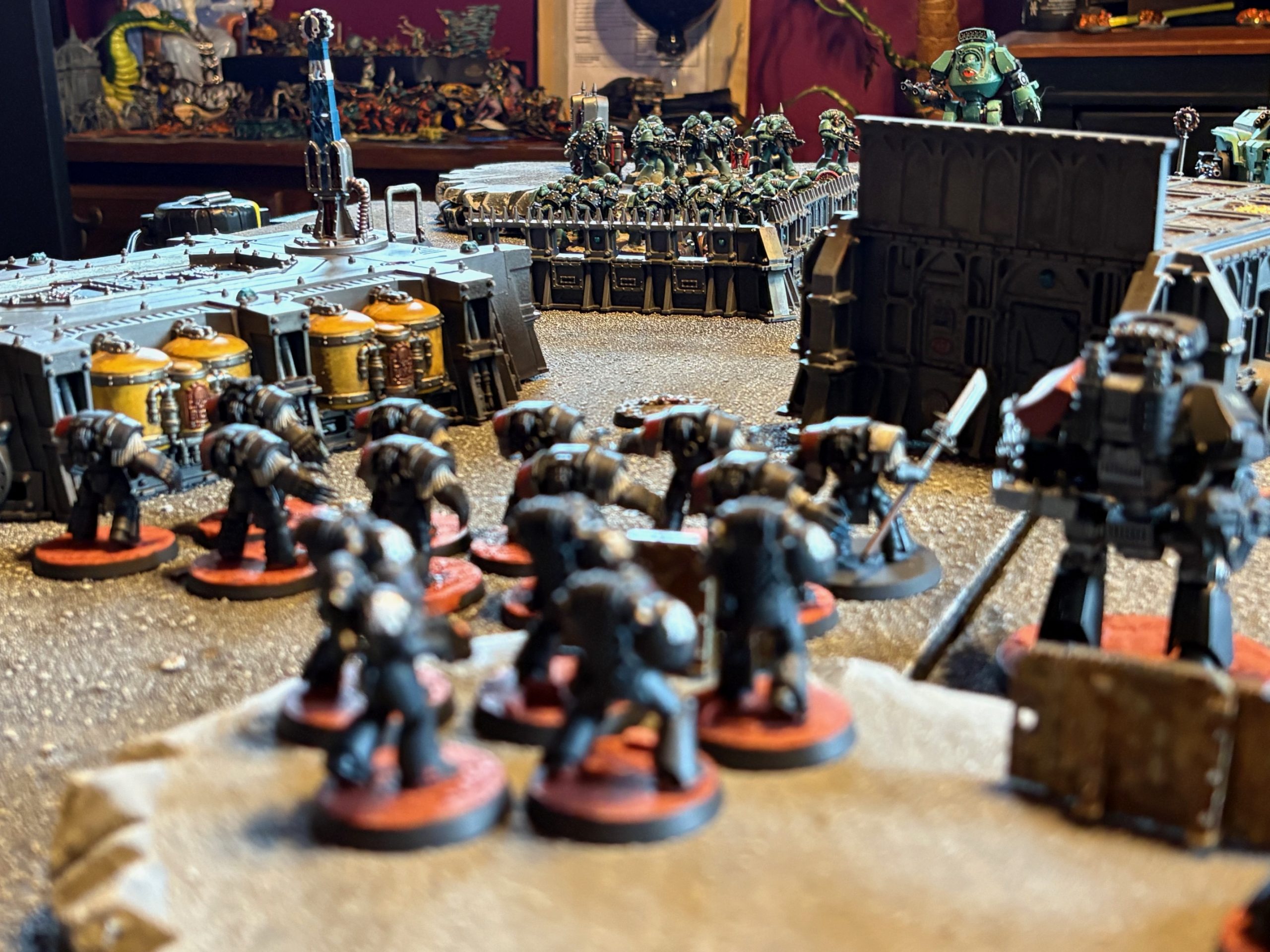Miniatures war gaming is a hobby based around delayed gratification, especially if you try and only play fully painted games like me, a crazy person. This is all to say that the third edition of Warhammer: The Horus Heresy was out for over two full weeks before I managed to get in a game. We here at Galaxy in Flames were already on a mild hiatus for the edition launch, which was prolonged due to the extremely toxic environment in the fandom after this spring’s leaks. Frankly, it was less than zero fun to take part in the usually good-natured Heresy community until the game finally released, the Legacy PDF was released, and most of us got back to actually playing games. Basically, not having played the game yet and not being interested in taking part in the doom-laden speculation cycle, we decided to just shut the hell up until we had something substantial to talk about.
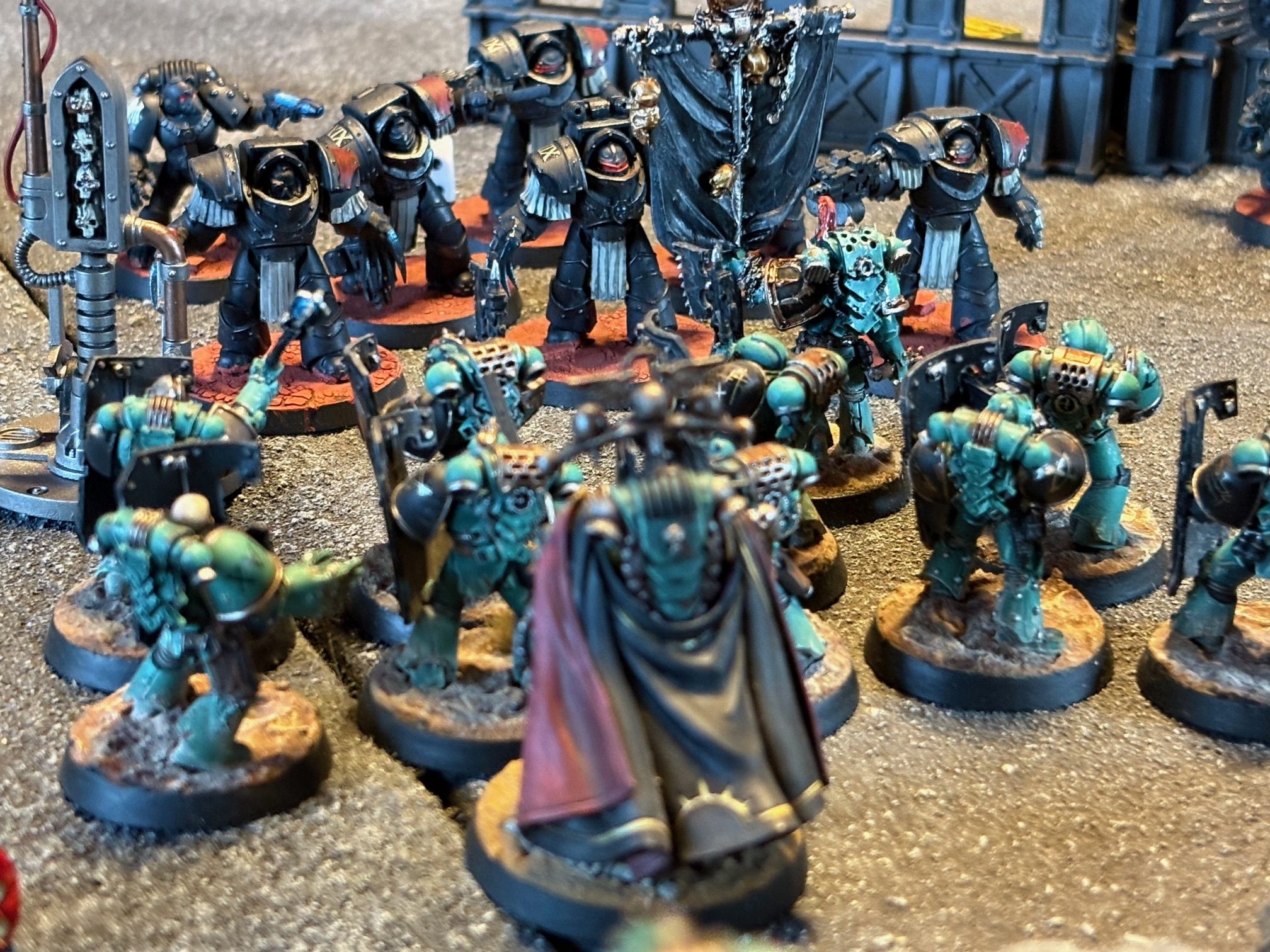
Well, that time is here! Lars and I finally managed to schedule a game, and jumped headfirst into the new edition with a full 3,000 point game using much of the material from the first supplement, Journal Tactica: The Isstvan V Dropsite Massacre – Part One. We’re going to talk about this in greater depth on the actual podcast but I wanted to share a few thoughts and some pics.
My top level feeling is that the game is in really good shape on the whole. I think gameplay is more tactically interesting and offers difficult but compelling choices both in list construction and on the table. Where before the different space marine legions were largely differentiated by their Rites of War, now more pervasive and thematic benefits are spread across your forces no matter how you’ve chosen to build your army. In hindsight, Rites of War were a very limiting factor, only a relatively small handful were mechanically useful, and some of those were inaccessible to most players due to intense model requirements (who was actually running 3-4 storm eagles for Angels ‘Wrath?). My group played a lot of games over the course of 2nd edition and even being generous, I doubt I saw more than ten different rites of war over the course of those three years.
As with any new edition, there’s a lot of unlearning to do and that certainly slowed us down. As did playing a narrative scenario with all the bells and whistles was a lot to consider. We went in knowing this would be a learning day, and we spent a lot of time double checking rules in an effort to really absorb everything. I’m glad we did, even if it did make for a long day! But even with the slow pace over the first two turns (it picked up dramatically as we got a handle on new concepts and of course, as models on the table dwindled), we had a great time and were really impressed with the narrative richness provided by the new rules.
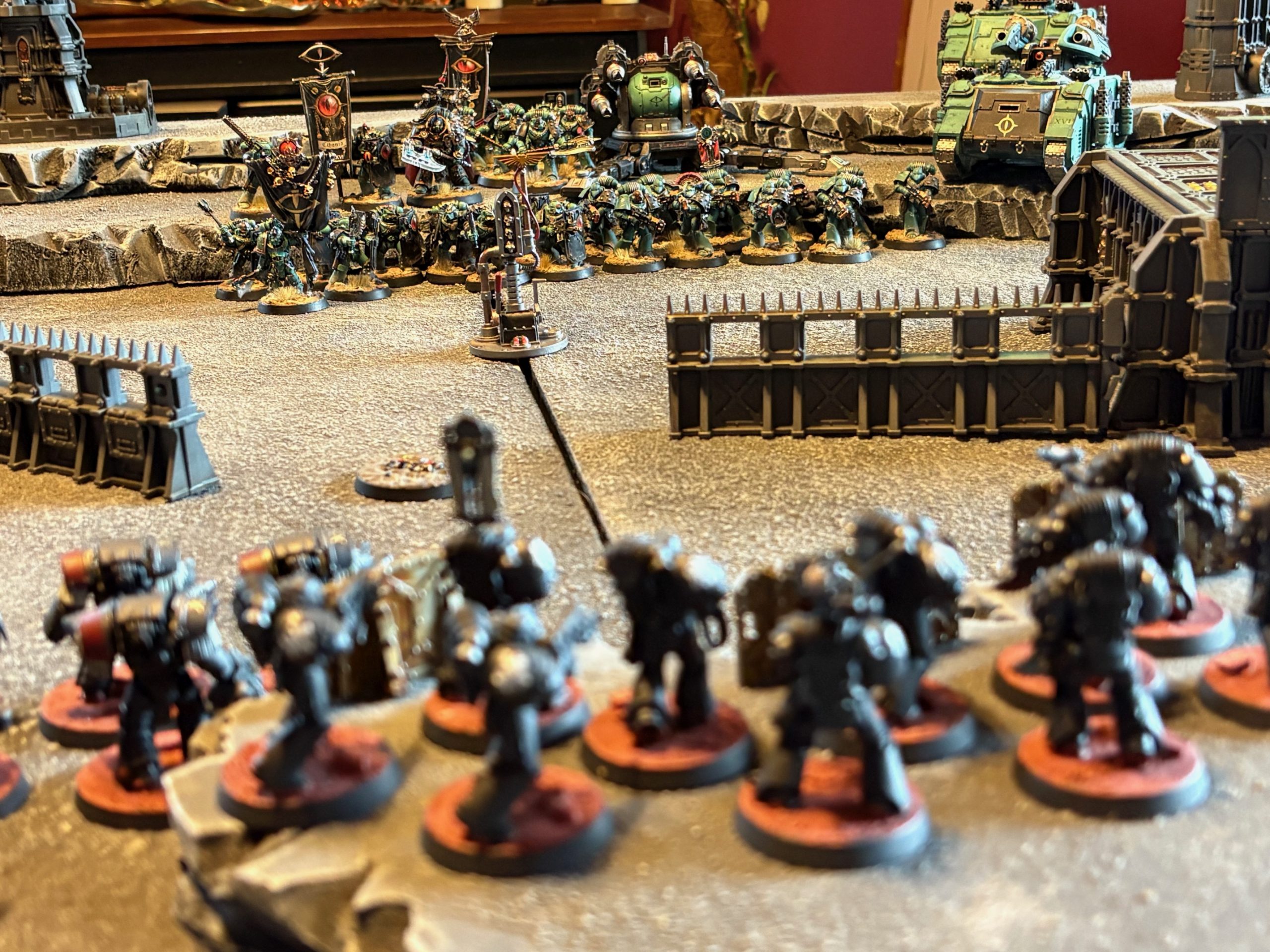
Playing the “First Wave” scenario saw my Sons of Horus defending their forward positions in the Urgall Depression against Lars’ freshly landed Raven Guard. We chose to use the new Battlefield Assets system with my 5 points spent on melta-mine fields and a cogitator, while Lars chose two ammo drops and a disruption emitter. Choosing the mission before building lists as the new edition suggests was a great idea as it let me build a force to defend a position while Lars could focus on an aggressive list intent on taking and holding objectives. We also both took advantage of the Interdiction Cadre prime benefit, which saw each of us launching surprise attacks from below with tactical squads.
The game was super thematic and really did a great job of immersing us in the narrative of the first engagements of the infamous Dropsite Massacre. The asymmetrical victory conditions were really interesting with my defending traitors scoring points by wiping out enemy units who were in turn scoring points by taking objectives. Ultimately, the game saw a win for the Sons of Horus with a score of 20-16 but Lars came very close to forcing a draw on his last turn. My praetor had narrowly laid low the Raven Guard praetor in a challenge and then, nursing his wounds, bravely ran for cover in a nearby bunker on turn 4. Lars came just one Hull Point from bringing that bunker down on his head which would have revealed my badly wounded warlord to a nearby squad of Mor Deythan who almost certainly would have finished him off. Ultimately, it was a very close game and at no time did either of us feel that victory was outside of our grasp.
I’m also really enjoying the inclusion of status effects this edition. It really makes for some interesting choices. Do you finish off a unit that’s already routed or just be satisfied that they’re going to spend at least a round rallying? Do you try and lure your opponent into using their reactions later in a round in the hopes of dropping a Stun status on a critical unit? Lots to consider during play but from a relatively small pool so it’s not overwhelming.
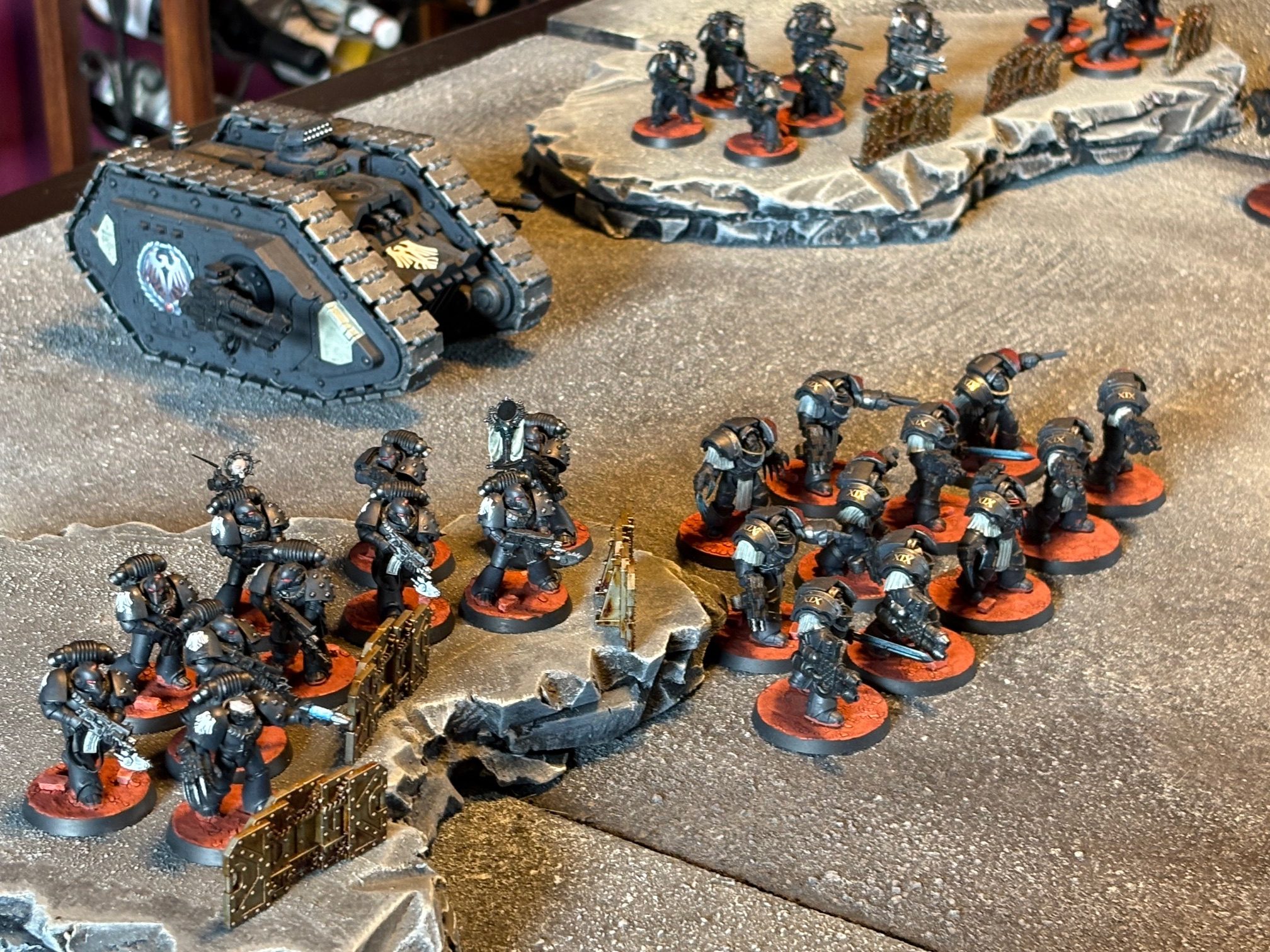
A few closing thoughts for this blog.
I only have one major criticism, and one minor one. The major is that deep strike is great for shooting units but terrible for melee. Poor Lars had a unit of Dark Furies who deep striked on turn three right in the middle of my army. They weathered reaction fire from my Araknae Quad-Accelerator with only a couple of casualties but without being able to charge that round it ensured that they would be shot to pieces before I charged them myself on the following turn. They’d still be a powerful unit if deployed normally but deep striking is a terrible choice for a unit that excels in melee unless it can really weather a storm or has some secondary method of entering melee.
Secondly, I don’t miss much from second edition with the exception of Warlord Traits. I always liked these as a way to give my warlord a little bit of character beyond their war gear. This isn’t a huge loss to me, but I did like that touch of personalization in army building.
With that said, almost everything about the game was a positive for me, but a few things stood out.
The new building rules are simple but interesting. Buildings are now essentially immobile transport vehicles with low armor but high hull points. Taking cover in buildings allowed Lars to score a nearby objective for several rounds without exposing his 5 man squad to enemy fire while, as mentioned above, my wounded praetor sought the better side of valor at the end of the game. While currently units can’t shoot from within a building, I can see future supplements or house rules easily permitting such.
Finally, challenges are fun as hell. The rules seem cumbersome at first glance but after making our way through the first one we quickly got the gist of it and were making fun and thematic choices. The special gambits for each legion are super flavorful. The Raven Guard ability to potentially act before their opponent is incredibly powerful even if Lars’ poor Praetor rolled a handful of ones…Meanwhile, one of my centurions who was enjoying the Prime Benefit Paragon with +1WS was able to use the Sons of Horus “Warrior Pride” reaction to ignore the challenge by a Raven Guard centurion which felt very much in character for the sneering contempt that exemplifies the Warmaster’s own.
The new legion benefits are looking really interesting so far. While they are perhaps less dramatic than in the past, their effects are very powerful. Raven Guard benefit hugely at long range, with most marines only being able to hit them on a 5+! Alternately, the Sons of Horus innate ability that makes their volley shooting attacks operate at standard Ballistic Skill instead of as Snap Shots was solid enough. My army didn’t have a lot of units armed to take good advantage of this but I can see how I could build some very powerful units around that ability.
On the whole, I think the game is in the best place it’s ever been. I’m really stoked to play more events, and if you’re in the Puget Sound area, come check out my upcoming First Salvo mega-battle event weekend in October.
Death to the false emperor!
